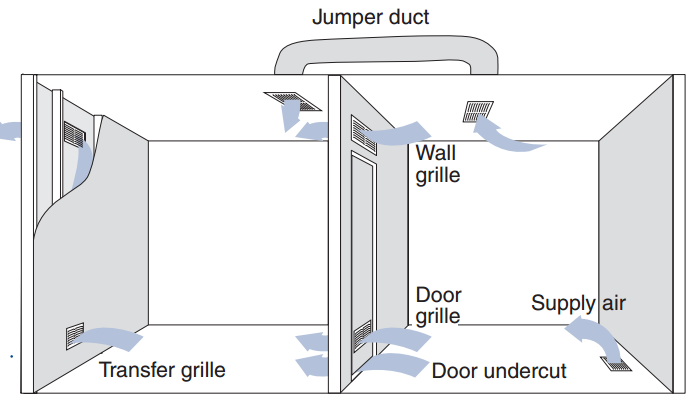| 1. |

According to the above picture, what is the name of this supply duct system?(Refer to Page-2)
|
|
|
Perimeter Loop System |
|
|
Trunk and Branch System |
| 2. |
Properly designed and installed duct systems can have efficiencies of 80% or more for little or no additional cost, potentially saving a homeowner __________ or more per year in heating and cooling costs. |
|
|
$50 to 200 |
|
|
$30 to 70 |
| 3. |
A perimeter loop system-uses a perimeter duct fed from a central supply plenum using several feeder ducts. This system is typically limited to houses built on slab in cold climates and is more difficult to design and install. |
|
|
True |
|
|
False |
| 4. |
Air distribution ducts are commonly constructed from sheet metal, rigid fiberglass duct board, or flexible nonmetallic duct. Selection of duct material is based on__________________. |
|
|
price, performance, and installation requirements |
|
|
aesthetics beauty and appearance |
| 5. |
To prevent supply air from being swept directly up by kitchen, bathroom, or other exhaust fans, the distance between supply registers and exhaust vents should be kept as small as possible. |
|
|
True |
|
|
False |
| 6. |
Air distribution system should be designed obeying which manual? |
|
|
>Air Conditioning Contractors of America’s (ACCA’s) Manual D: Residential Duct Systems |
|
|
>North America Air Conditioning Society (NAACS) Manual D: Residential Duct Systems |
| 7. |
According to the Air Conditioning Contractors of America’s (ACCA’s) Manual D: Residential Duct Systems, how many steps are required to follow in the design of an air distribution system to ensure efficiency and comfort. |
|
|
12 steps |
|
|
8 steps |
| 8. |
When is it more efficient to use two or more separate heating and cooling systems, each with its own duct system? |
|
|
Two-story home |
|
|
Single-story home |
| 9. |
Flex duct is easily torn, crushed, pinched, or damaged during installation. It has the highest resistance to air flow. |
|
|
True |
|
|
False |
| 10. |

According to the above picture, name the specific technique? (Refer to page-3)
|
|
|
Return Air Techniques |
|
|
Reoccurrence Air Techniques |
|
|